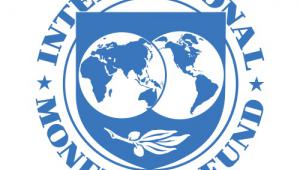By Richard Johnstone | 22 July 2013
The quality of crucial economic infrastructure in many eurozone countries is set to deteriorate over the next decade threatening to choke off their recovery from the economic crisis, a report published today has warned.
The Global Built Asset Wealth Index, published for the first time today by consultancy EC Harris, analysed the value of the built environment across 30 developed countries. Built assets are defined as all tangible fixed capital investment counted as assets in national accounts. As well as roads, railway and airport infrastructure provided by the public and private sector, this also includes investment in both homes and business premises and investments in machinery.
The index is headed by the US, with assets worth $39.7trn, and China, where there is $35.4trn worth. These are the only countries with economic infrastructure worth more than $20trn, with Japan in third place on the list at £18.2trn.
The report, which was produced in association with the Centre for Economic and Business Research, predicted that China’s built asset wealth is set to more than double over the next decade, while in the US it is projected to grow by 19%. This means that China could overtake the US in built asset worth as early as 2014.
However, growth in Europe is expected to be much more subdued at around 2.7%.
Due to reductions in government spending and low economic growth, the report concluded that in some struggling eurozone economies, investment will fall short of asset depreciation, meaning a reduction in built asset stock value.
Ten of the economies in the study – including Netherlands, Germany, Spain, France, Italy and the UK in Europe – are thought to have seen the value of assets per person decline in 2012 compared to the previous year, the analysis stated.
This means the potential for built assets to contribute to the economy and generate income for the populations of these regions is in decline, EC Harris’ head of strategic research and insight Simon Rawlinson said.
‘These nations need to continue to invest in new and existing built assets to improve mobility, productivity and standard of living, but do not have the available finance to do so,’ he added. ‘They need to make best use of their existing asset base to develop new sources of competitive advantage.
‘In a world where the balance of economic power is shifting, we see countries in the East with large cash reserves investing in their built environment at an unprecedented rate, whereas countries in the West have an ageing built environment, but little cash to update it.
‘Those nations that make the most from investing, developing, operating and reinventing their built environments are the best placed to succeed in the changing world economy.’
The top 10 of countries and total economic asset worth is:
1.US $39.7trn
2.China $35.4trn
3.Japan $18.2trn
4.India $11.8tn
5.Germany $10.4trn
6.France $7.8trn
7.Italy $7.4trn
8.South Korea $6trn
9.Russia $5.9trn
10.Spain $5.9trn












